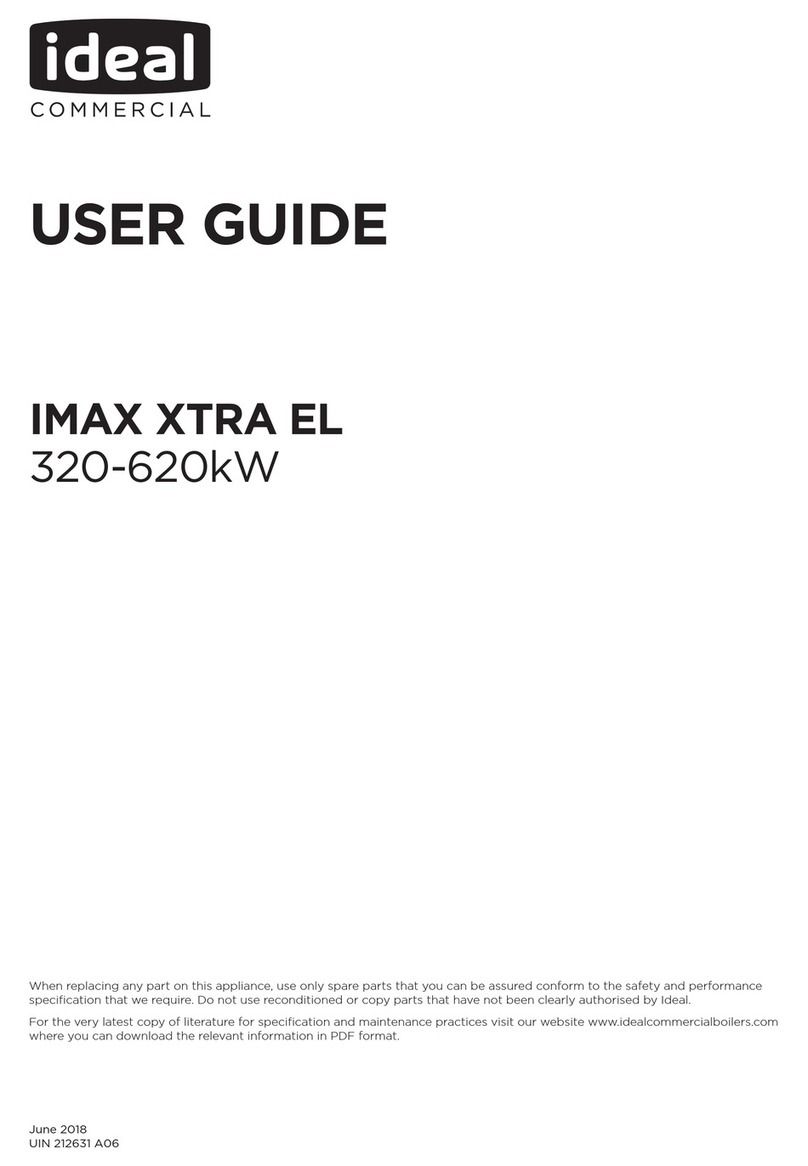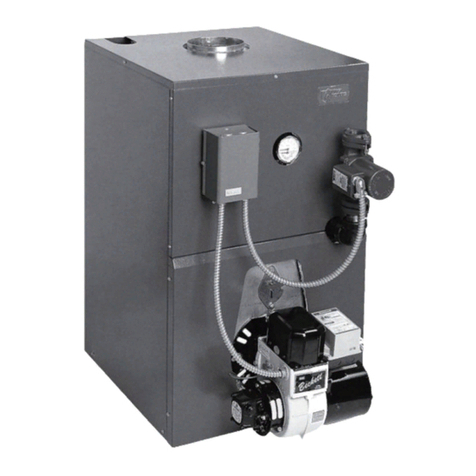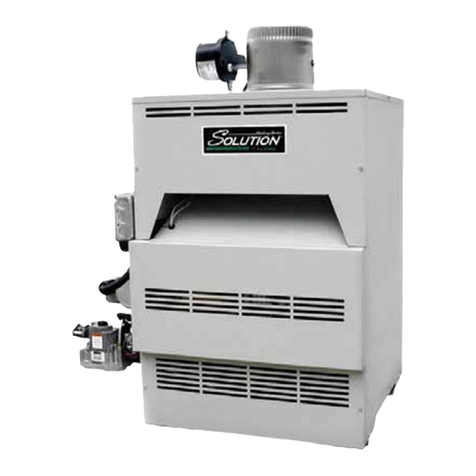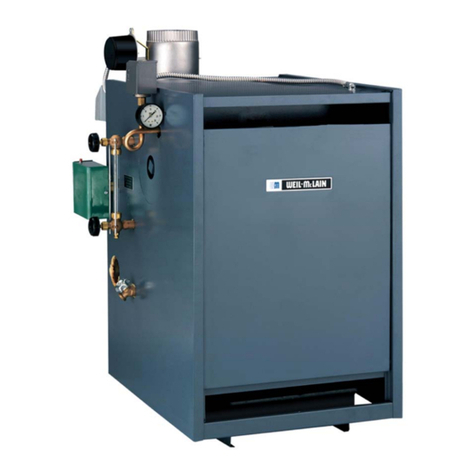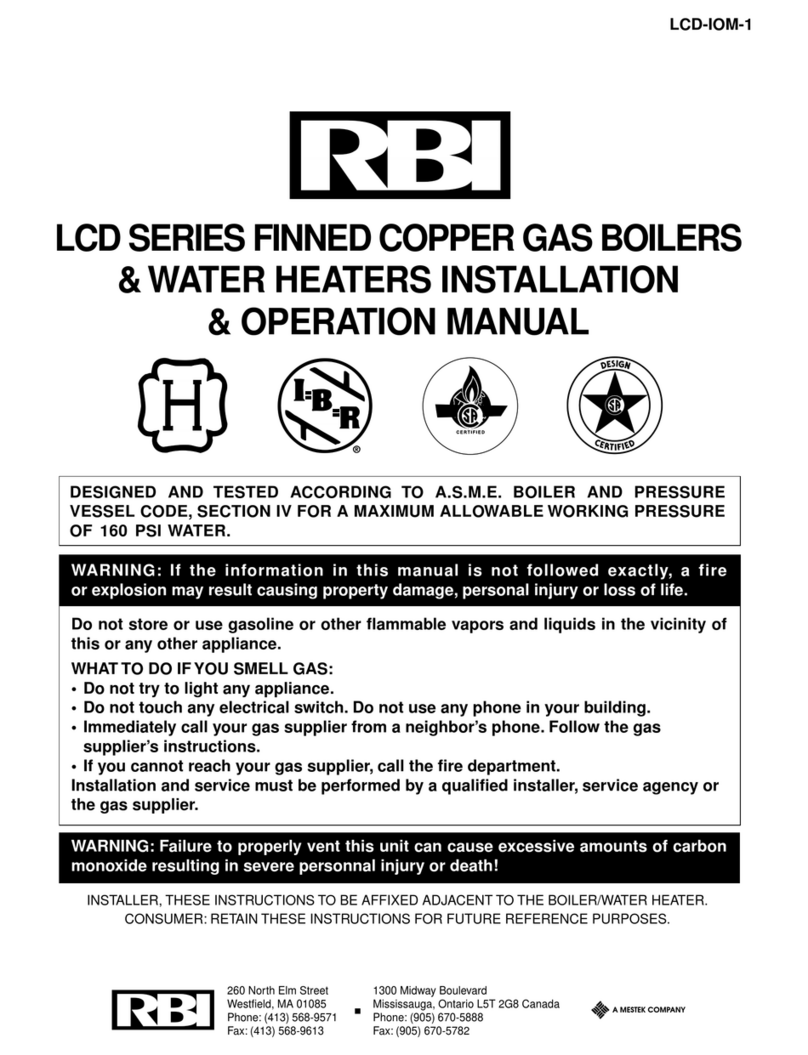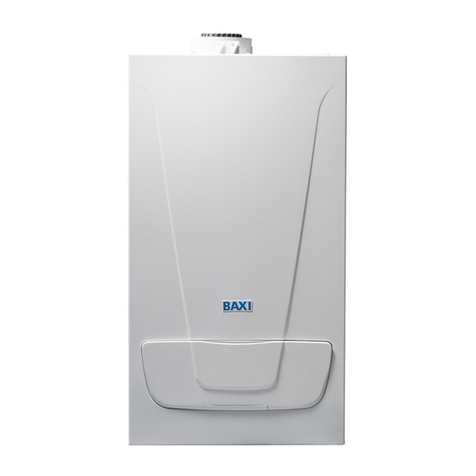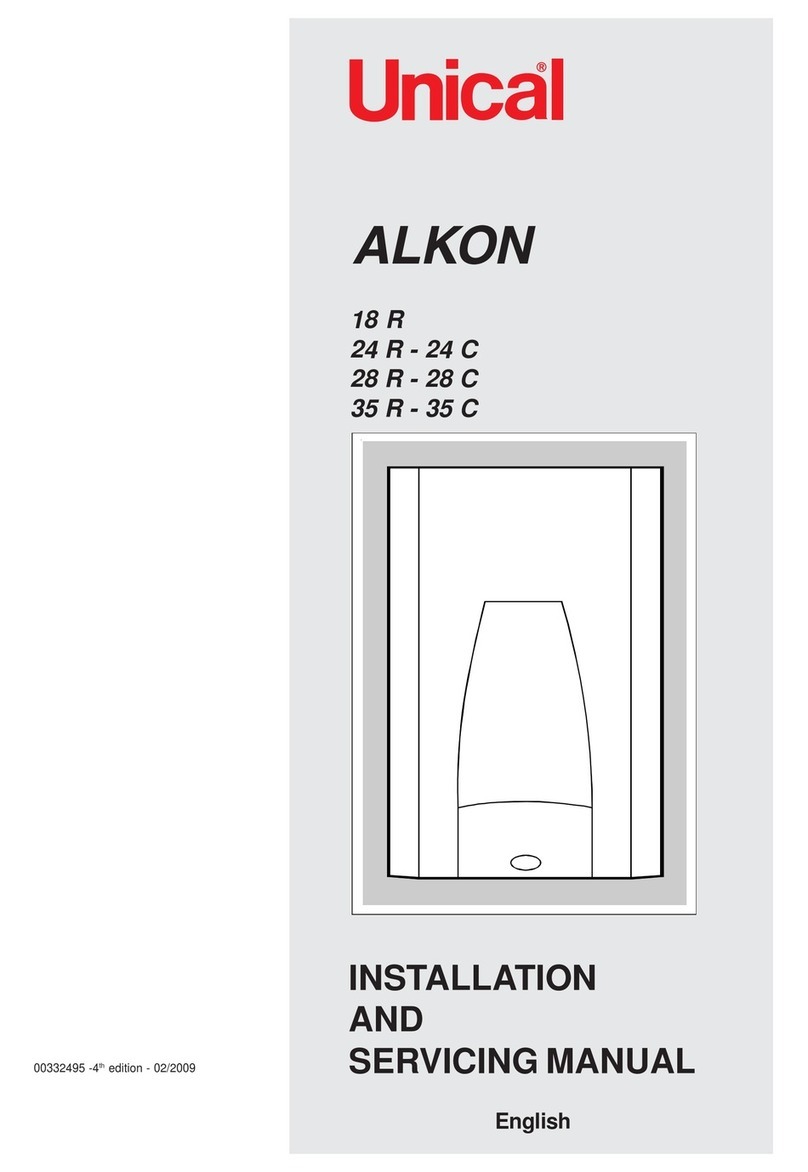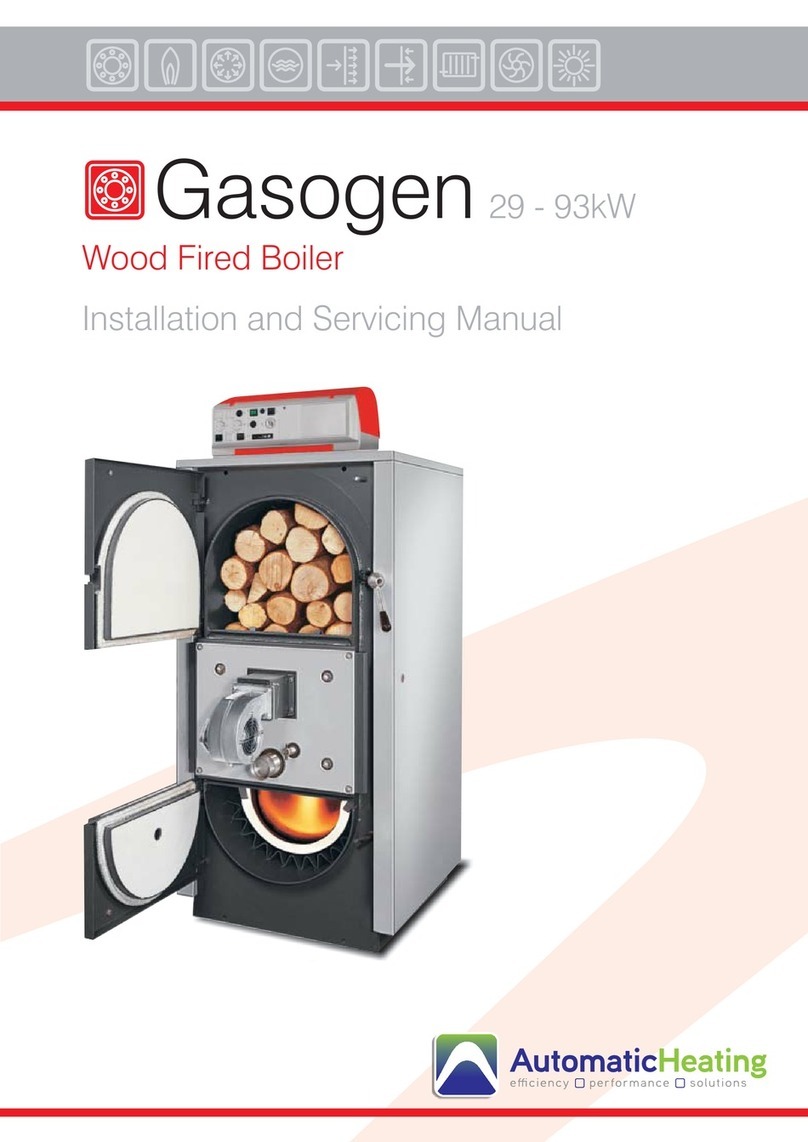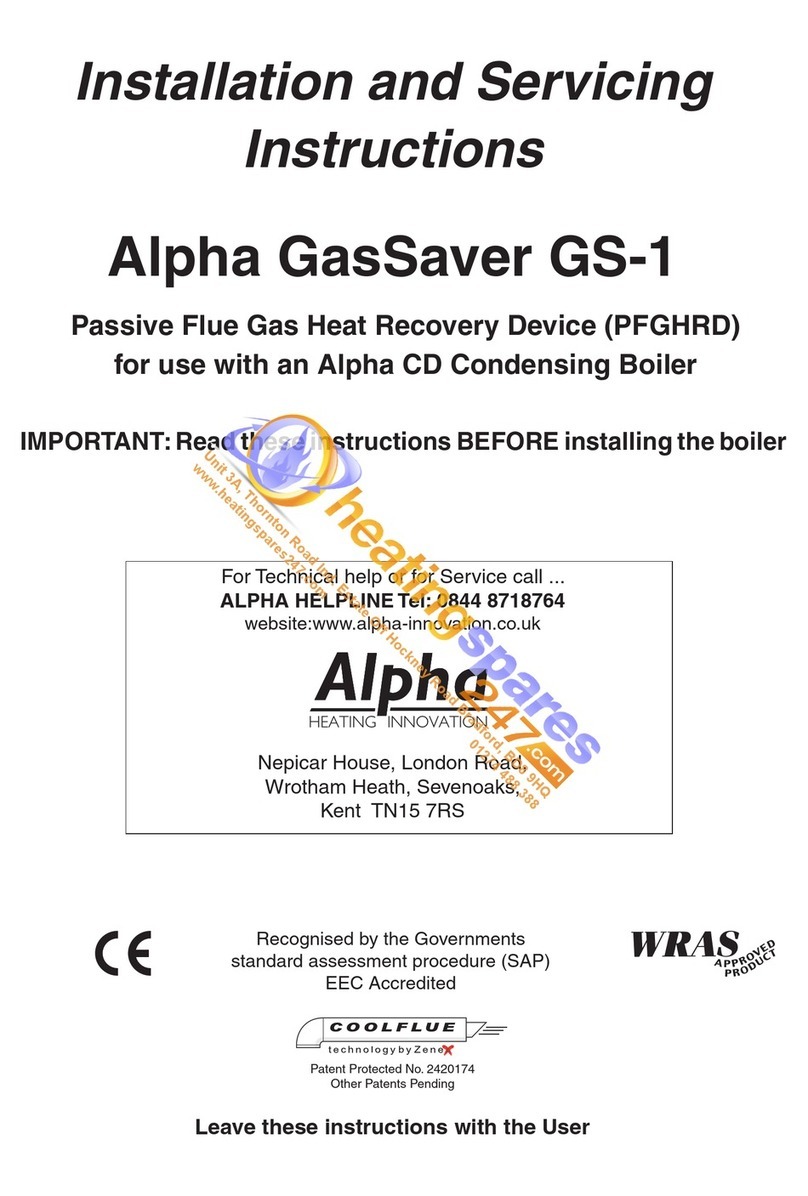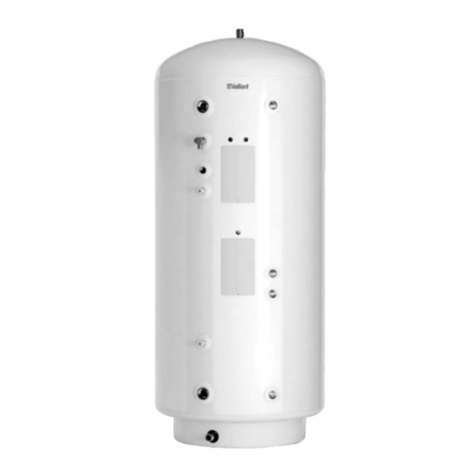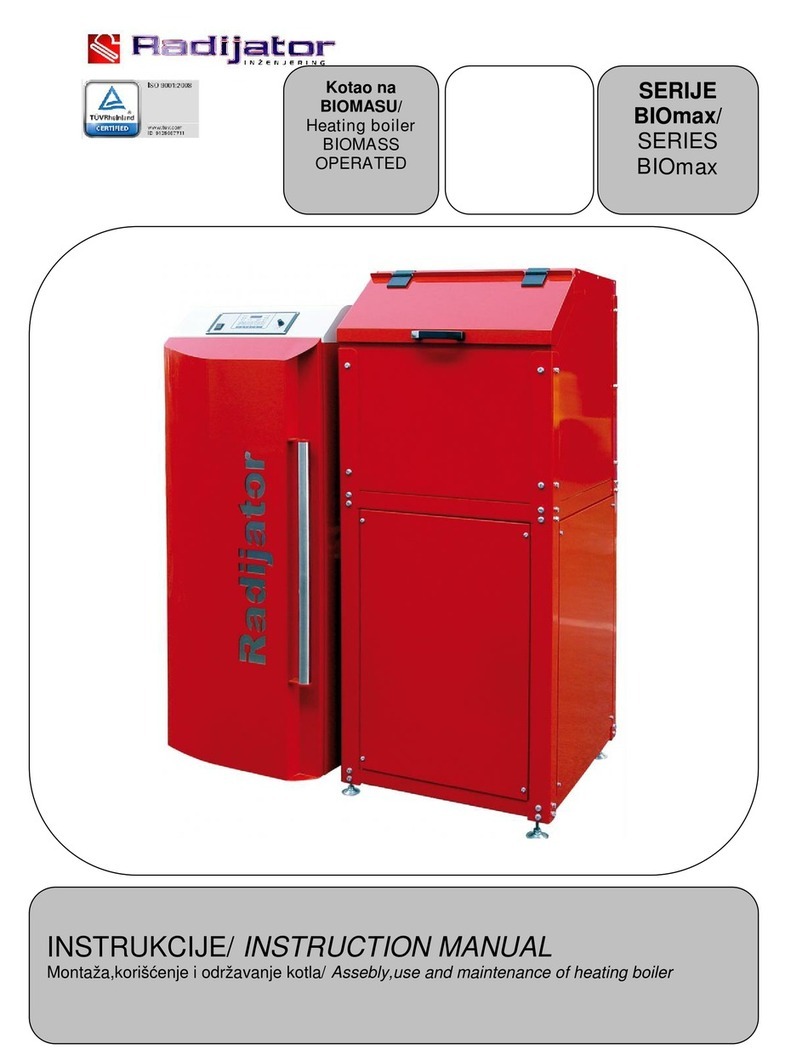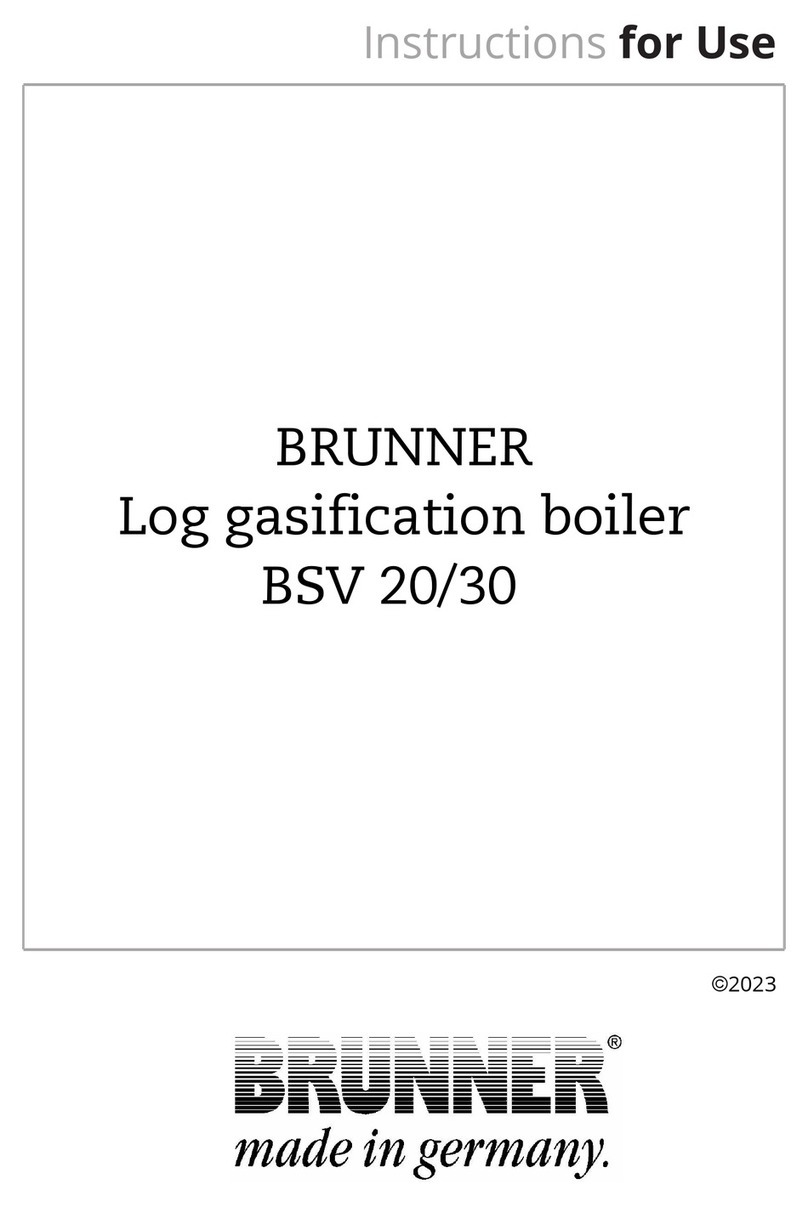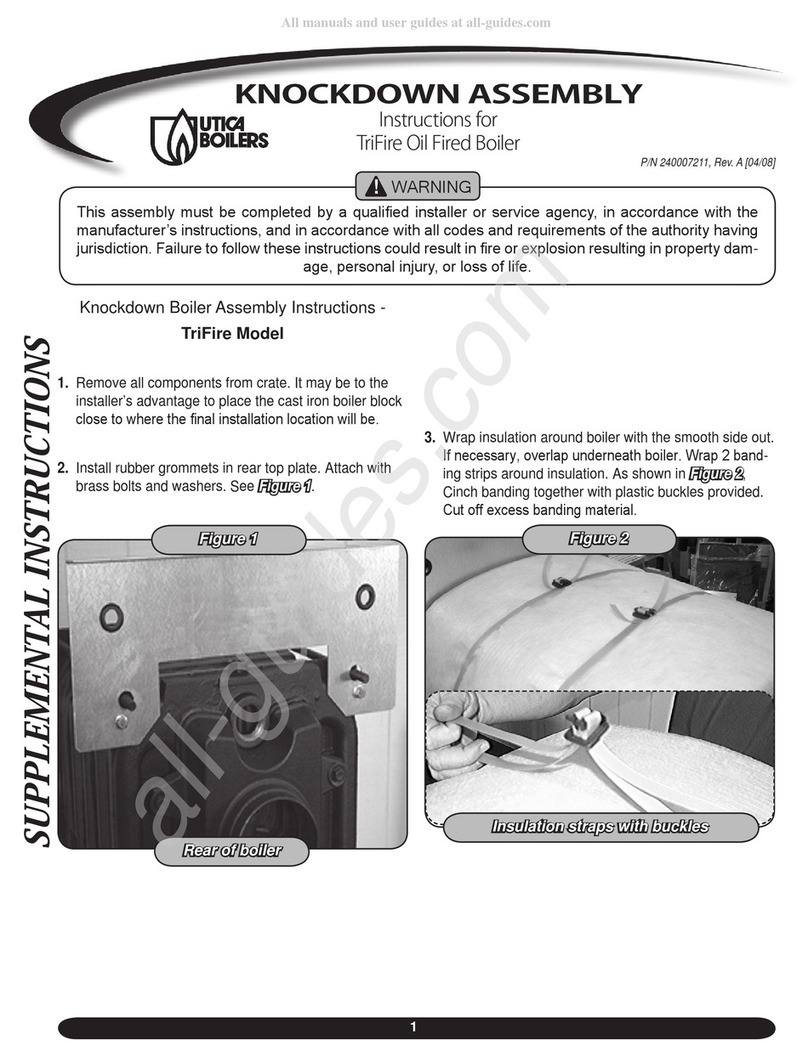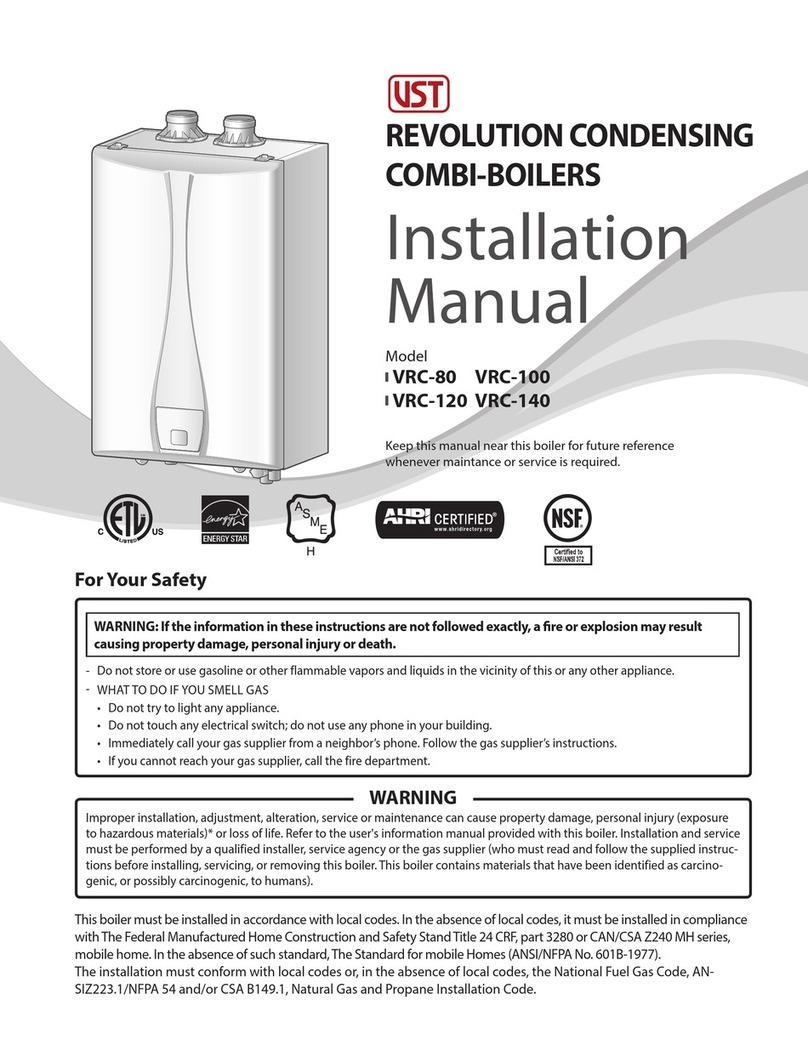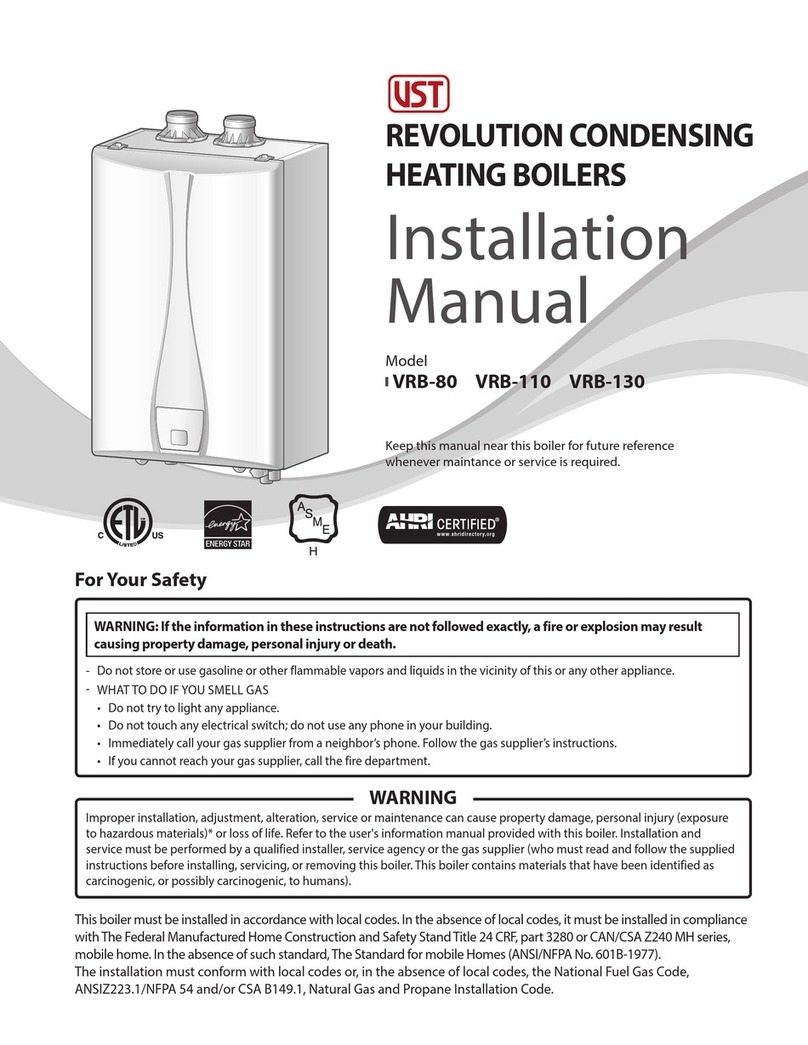
3
Safety Information
Warning
•Do not store combustibles, such as papers or laundry, near the boiler or venting system.
Failure to do so may result in fire or explosion.
•Do not store or use gasoline or other flammable liquids near this boiler.
Failure to do so may result in fire or explosion.
•Do not store or use compressed gases, such as hair sprays or spray paints, near the boiler or venting system, including the vent
termination.
Failure to do so may result in fire or explosion.
•Do not remove the front cover unless the power to the boiler is turned off or disconnected.
Failure to do so may result in electric shock.
•Do not touch the internal components of the boiler or the power cord with wet hands.
Failure to do so may result in electric shock.
•Do not operate the boiler with the front cover opened.
Failure to do so may result in fire or carbon monoxide (CO) poisoning, which may result in property damage, personal injury, or death.
•Do not operate the boiler without proper venting.
Failure to do so may result in fire or carbon monoxide (CO) poisoning, which may result in property damage, personal injury, or death.
•Shut off the gas supply if the boiler is damaged.
Have your installer or plumber show you the location of the gas shut off valve and demonstrate how to close the valve. If the boiler is
damaged as a result of overheating, fire, flood, or any other reason, close the manual shut off valve and do not operate the boiler again until
it has been inspected by a qualified technician.
•Should overheating occur or the gas supply fails to shut off, do not turn off or disconnect the electrical supply to the pump. Instead,
shut off the gas supply at a location external to the application.
•Do not use this boiler if any part has been under water. Immediately call a qualified service technician to inspect the boiler and to
replace any part of the control system and any gas control which has been under water.
Caution
•Do not use the boiler for anything other than its intended purpose, as described in this manual.
Failure to do so may result in property damage, personal injury, or death.
•Do not turn on the boiler unless the water and gas supplies are fully opened.
Failure to do so may damage the boiler.
•Do not use unapproved replacement or accessory parts.
Failure to do so may result in improper or dangerous operation and will void the manufacturer's warranty.
•When servicing the controls, label all wires prior to disconnecting them.
Failure to do so may result in wiring errors.
•Do not place anything in or around the vent terminals that could obstruct the air flow in or out of the boiler.
Failure to do so may result in fire or carbon monoxide (CO) poisoning, which may result in property damage, personal injury, or death.
•Do not attempt to repair or replace any part of the boiler, unless it is specifically recommended in this manual.
For all other service, contact an authorized technician or licensed professional. Improper adjustments, alterations, service, or maintenance
may lead to property damage, personal injury, or death and will void your warranty.
•Do not operate the boiler if you suspect something might be wrong with it.
Doing so may result in product damage or personal injury.
•Do not allow children to operate or have access to the boiler.
Doing so may result in product damage or personal injury.
•Do not use this appliance if any part has been immersed in water.
Immediately call a qualified service technician to inspect the appliance and replace any part of the control system and/or any gas control
which has been immersed in water.
•This boiler has been approved for use in the USA and Canada only.
Using the boiler in any other country will void the manufacturer's warranty.
